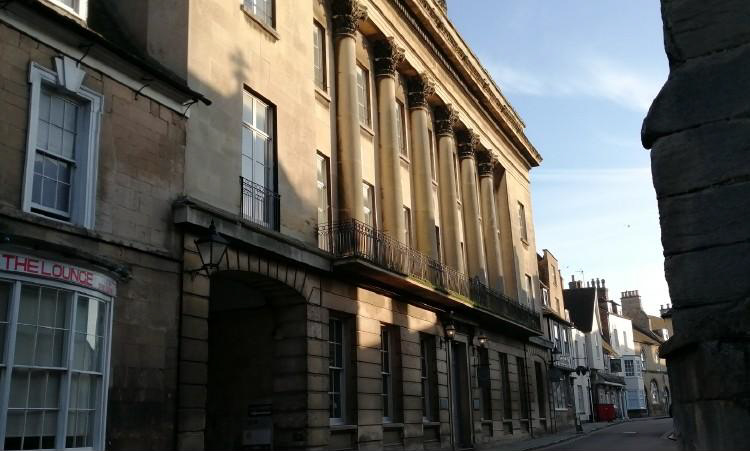

Stamford Hotel
Stamford Hotel was built on the site of the Black Bull Inn, a large rambling building dating from the 15th century with extensive yards at the rear providing stabling and a venue for sundry other uses including cock-fighting.
From the street front the hotel is a most impressive three story neo-classical building, extending across seven bays articulated by giant Corinthian columns and capitals. When built it was one of the largest Regency hotels in the country. Work on it started in 1810 for the local landowner Gerard Noel of Exton, a Whig with political aspirations in opposition to the Tory domination of Stamford by the Cecil family. The Hotel was a bold statement in stone of his political ambition. It is primarily of Ketton stone from Noel’s own quarries and the interior was extremely ornate with its fine oval staircase surmounted by a circular lantern.
It may be wondered why such a huge building, designed by J L Bond of London, was erected on such a constricted site at a cost of £43,000. One theory advanced by Samuel Sharp in 1847 was that Noel thought he could offer a sufficiently large sum to have St Mary’s Church removed leaving his hotel with the statue of Justice on its roof in a dominating position facing southwards across the Welland valley towards the Burghley estate. In this of course he was disappointed and, following his defeat in the 1812 election the building ceased to be the headquarters of the local Whig party. It remained empty until 1825 when it was bought by Thomas Standwell and reopened to “accommodate families of highest distinction in superior style.”
The building is still known as the Stamford Hotel but, having progressively declined from its earlier standards it ceased to perform such a function and was converted into the Stamford Walk shopping centre in 1983.